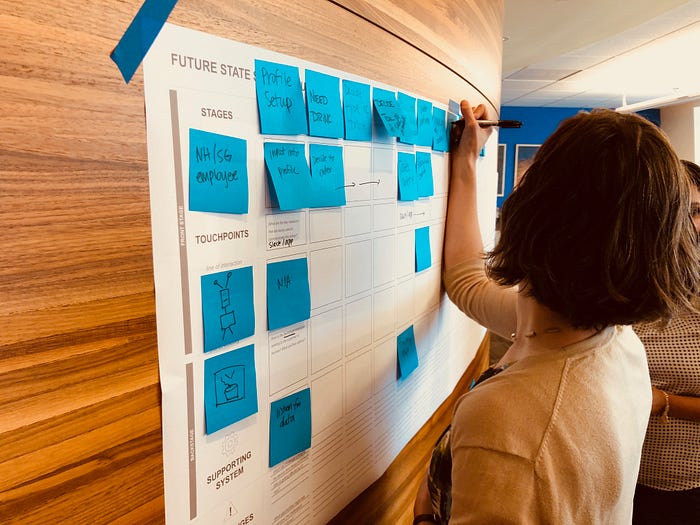
The Service Design Blueprint.
Making Journey Maps actionable.
Customer Journey Mapping has become the iconic thing to do for Customer Centric Business Transformation efforts (CX). Businesses needed a way to align the organization around the customer and identify the pain points they were experiencing. It’s a great first step in understanding how a customer’s interact with a product or service. The problem is customer journey maps didn’t help with what to do when those pain points were discovered. It left business no knowing what to do after creating customer journey maps. All too often they were left rolled up in the corner collecting dusts after they were completed. This is where Service Design and Service Blueprints can help, they take those journey maps and make the actionable for the business.

Service Design is a human-centered design approach, rooted in design thinking, to improving and innovating how businesses and/or organizations get business done. In practice, it helps to bridge the inherent gap between customer needs and internal processes by planning and organizing people, infrastructure, communication, and material components across all physical and digital touchpoints to improve product, service, and interaction quality.

Core to Service Design is a Service Blueprint that visualizes the beginning-to-end journey and how an organization creates and delivers an experience. It clarifies the interactions between recipients/users, touchpoints, and providers, including the frontstage activities that impact the recipient directly, and the backstage activities that the recipient does not see, but are critical to understanding and improving the experience.

Service Design Blueprinting identifies and orchestrates how an organization is structured and aligned to deliver a successful customer/employee experience.
Service design involves reimagining, recreating and redesigning the execution of every stage and aspect of any and all interactions between a customer (or employee) and company, to satisfy human/user needs and advance the businesses strategic goals.
Service Design is a systematic and iterative process that integrates user-oriented, team-based, interdisciplinary approaches and methods, in ever-learning cycles.
Key Terminology:
Service = A means of delivering value to a customer by facilitating outcomes the customer want to achieve.
Service Users = The direct beneficiaries of the service
Service Employees = The individuals who see the service through
Ecosystem = The collective whole of all channels, services, touchpoints, and interactions in a business.
Touchpoint = A single point of interaction between the customer/employee and the service.
Frontstage = The part of your service that the customer can see and experience.
Backstage = The part of your service that happens “behind the scenes” and is not visible to the customer.
Customer Experience = Customer experience is the outcome of the collection of end-to-end interactions (touchpoints) a person has with a business or organization and its products or services as perceived, understood and remembered (by the person).
Customer = Anyone who engages to fulfill an existing or emerging need with the organization/business in some manner (customer, employee, community member, etc.)
Minimum Viable Experience (MVE) =A Prototype representing the end-to-end service visions and components, from frontstage concepts to backstage processes, both business models, technology capabilities, organizational structures and operating models, with human-centered mindsets and behaviors that are essential to delivering the service.

